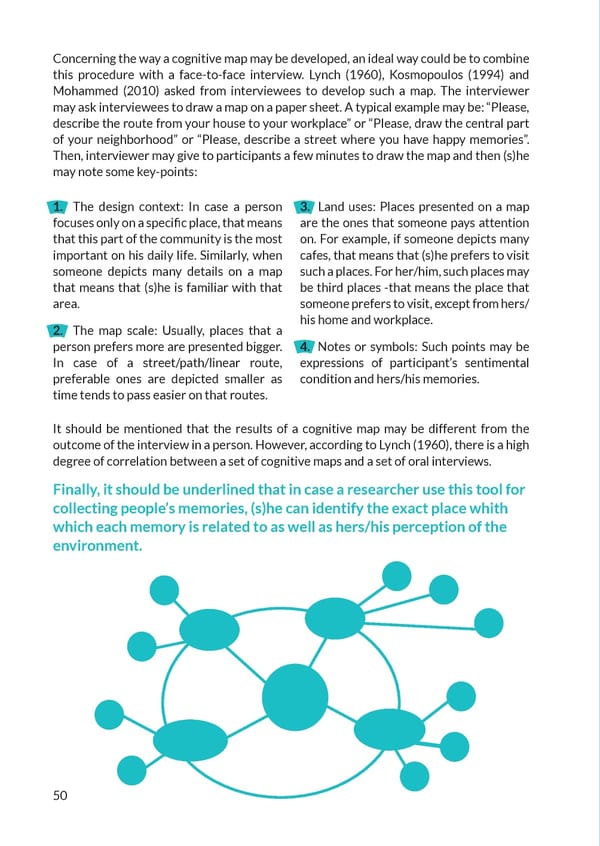Concerning the way a cognitive map may be developed, an ideal way could be to combine this procedure with a face-to-face interview. Lynch (1960), Kosmopoulos (1994) and Mohammed (2010) asked from interviewees to develop such a map. The interviewer may ask interviewees to draw a map on a paper sheet. A typical example may be: “Please, describe the route from your house to your workplace” or “Please, draw the central part of your neighborhood” or “Please, describe a street where you have happy memories”. Then, interviewer may give to participants a few minutes to draw the map and then (s)he may note some key-points: 1. The design context: In case a person 3. Land uses: Places presented on a map focuses only on a specific place, that means are the ones that someone pays attention that this part of the community is the most on. For example, if someone depicts many important on his daily life. Similarly, when cafes, that means that (s)he prefers to visit someone depicts many details on a map such a places. For her/him, such places may that means that (s)he is familiar with that be third places -that means the place that area. someone prefers to visit, except from hers/ his home and workplace. 2. The map scale: Usually, places that a person prefers more are presented bigger. 4. Notes or symbols: Such points may be In case of a street/path/linear route, expressions of participant’s sentimental preferable ones are depicted smaller as condition and hers/his memories. time tends to pass easier on that routes. It should be mentioned that the results of a cognitive map may be different from the outcome of the interview in a person. However, according to Lynch (1960), there is a high degree of correlation between a set of cognitive maps and a set of oral interviews. Finally, it should be underlined that in case a researcher use this tool for collecting people’s memories, (s)he can identify the exact place whith which each memory is related to as well as hers/his perception of the environment. 50
 MemoryHandbook new Page 49 Page 51
MemoryHandbook new Page 49 Page 51